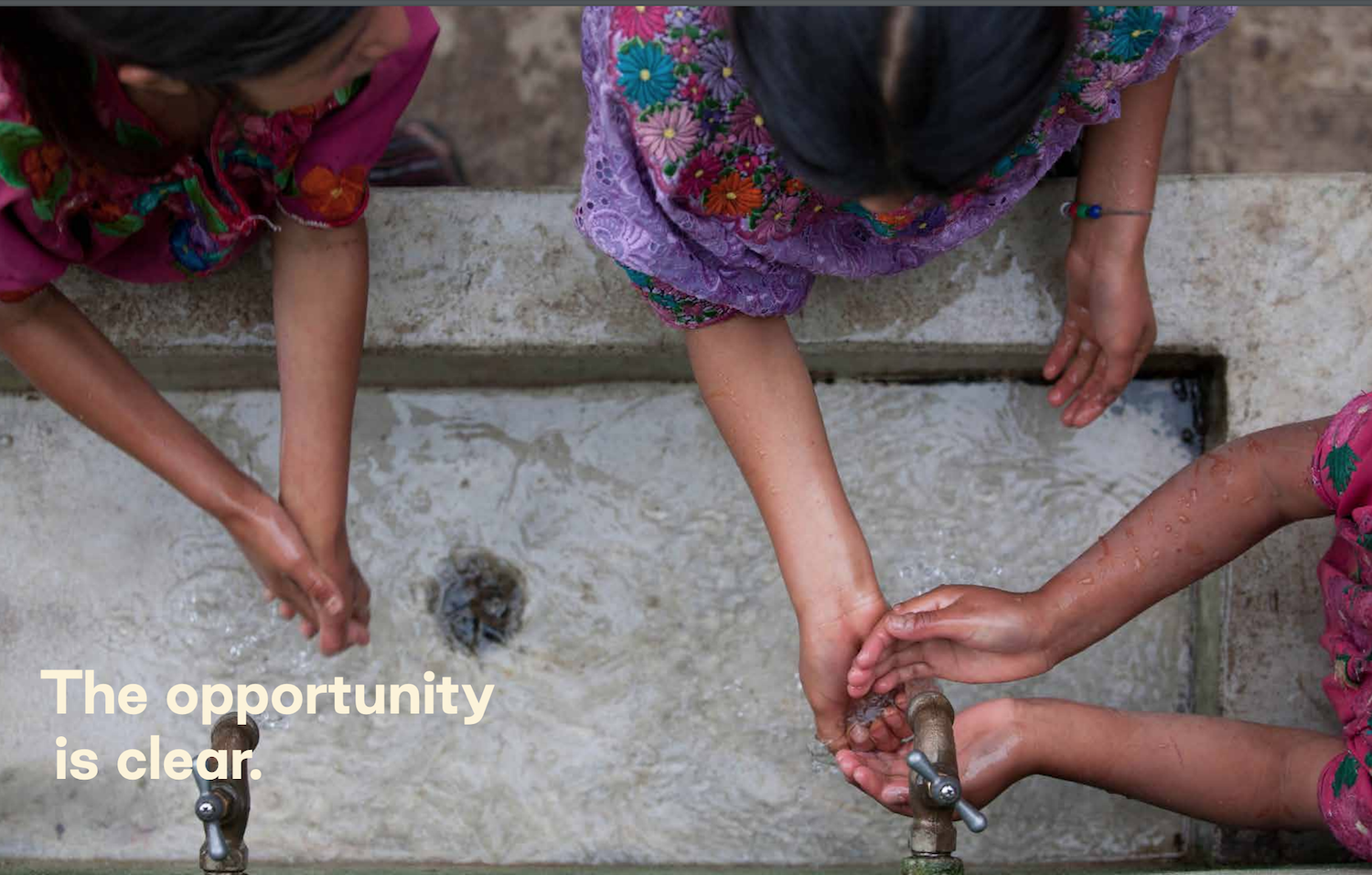
Guide to Impact Marketing
What is Impact Marketing?
Impact marketing, or cause marketing, connects a business product or service to a charitable cause – social, environmental or other nonprofits in order to place a brand as being environmentally, sociopolitically conscious. Achieving that can boost a company’s sales by targeting consumers who choose the companies they support based on their values. Creates emotional connections with consumers, expands reach and creates brand advocates.
For nonprofits impact marketing is a very significant way they receive funding for their work. And at the same time, it´s a way nonprofits can support brands that are doing purpose-driven work in these difficult times.
The most common way of impact marketing is when a brand offers to donate a percentage of sales or set donation to a nonprofit organization. Contracts between businesses and nonprofits can involve the right to use the nonprofit’s name or logo in the brand’s marketing purposes. Large nonprofits oftentimes ask for a minimum donation, that can be a few hundred thousands or even millions of dollars.
The origins of impact marketing date back to 1973, when 7-Eleven pledged to make a donation of 1 cent to the National Wildlife Federation for each “Endangered Species Cup” it sold. The campaign raised over $250,000 and allowed the NWF to donate over 1000 acres of bald eagle habitat in South Dakota to the U.S. Fish and Wildlife Service in 1974. Since then, this idea has inspired thousands of companies to donate a percentage of their sales to causes the public was interested in (full history on Wikipedia).
Impact or cause marketing occurs when a company does well by doing good.
Today, economic and social realities demand that companies and brands act as good corporate citizens. Cause-related marketing supports that goal. It’s also good business. Studies show that sizable numbers of consumers may change purchasing behaviour to select products and services associated with the causes they care about.
Many brands who don’t have an impact marketing strategy have started to develop one. Others who already have one are working on improving them.
This guide will help you understand how to set up and communicate campaigns to support the important work of nonprofit organizations.
5 keys to impact / cause marketing
1. Identify shared values
What do you believe in? What is your Why? What do your consumers believe in? Where do the two intersect? What are the factors at play in this cause or issue space? How is your brand qualified to address them?
2. Commit across your organisation
Make sure your internal practises align with your external social stance (if not Start there before going further). Define 1-3-5 yearly impact goals and set realistic budgets and timelines to reach them. Assign clear roles and responsibilities for all functions, from Ops to HR and hold everyone accountable. Announce your social commitments from the top down, but cultivate ownership from the bottom up.
3. Form strategic partnerships
Identify nonprofits that align with your social impact goals and organisational values. Have purposeful conversations to understand what they (the nonprofits) need to succeed. It is not always money, sometimes they need volunteers, other donations like books, clothes, food … Make sure you understand their needs and not just what you want to give them. Build relationships with decision-makers in all areas of their work, to build impact beyond one-time campaigns or chequebook charity.
4. Engage consumers
Tell people about your social mission- explain Why, How and What. Collaborate with your nonprofit partner: leverage their issue experience to develop initiatives that get consumers actively involved in driving change. Look for impact opportunities outside traditional “marketing” channels – advocacy, volunteering, program design, innovation. Have a clear CTA for how you want consumers to get involved, and give them multiple options.
5. Shift and share success
Instead of the usual marketing benchmarks of awareness, reach, conversations, impressions, purchase intent, and revenue, recalibrate your goals and KPIs to measure success in terms of human impact. Be transparent in communicating your results, both internally and externally, to establish trust for ongoing efforts.

For businesses that want to donate to a nonprofit
Flat donations
For these donations, you need to be fully transparent about how much, when and how you will be donating. And that needs to be clear in all customer communications. Do not say that purchase is linked to donation or anything that implies that customers’ purchases will help your donation. It misleads consumers as to the effect a purchase will have on the donation. A more appropriate form of advertising as we said would be to simply say that the company is a proud sponsor of the charity and to disclose the gross amount of the donation. Consumers can then decide whether they think the fact of the donation is a reason to purchase the advertiser’s product.
Per-purchase donations based on product sales
This type of donations requires a little bit more work to be done correctly, ethically and legally. Once you are going to donate a portion of the sales, your campaign becomes governed by “Commercial Co-Venture”.
“A commercial co-venturer is any person or firm who for profit regularly conducts a charitable sales promotion or underwrites, arranges or sponsors a sale, performance or event of any kind which is advertised to benefit a charitable organization.”
Guidelines
Be specific and honest in all communications and advertisements. You must name the exact nonprofit you are supporting, not a general cause.
You must say exactly how much per item will be donated. Ideally, this is a dollar amount. Percent donations should be listed in terms of “proceeds” or retail price, rather than “profit” or any net amount that subtracts expenses or margins which are not transparent.
Avoid use vague disclosures, such as “a portion of the purchase price” or “a portion of proceeds” or a designated percentage of “profits” or “net profits.”
Disclose any minimum or maximum amount; once maximum amount is reached, remove “your purchase supports” language immediately.
Important: You must be in direct contact with and sign an agreement with the charitable organization with the details of the donation.
Consider partnering with an intermediary to reduce your administrative burden. If you indirectly support multiple nonprofit organizations through a grantmaking intermediary like GlobalGiving, you need only that grantmaking intermediary to complete a commercial co-venture agreement.
You can join 1% For the planet and network, committing to donate the equivalent of 1% of gross sales through a combination of monetary, in-kind and approved promotional support directly to environmental nonprofits. (a lot of outdoor and action sports brands are part of this network).
Test your commercial co-venture over a short period. If your cause marketing campaign is a one-time event, state laws are less likely to require registration than if the promotion is ongoing. You could consider testing your cause marketing campaign over a short period, and then plan to launch a more long-term initiative based on your findings.
Don’t ask your nonprofit partners to advertise for you. While they can list your company as a supporter or partner, a nonprofit should not take an active role in advertising your product or services. This is unrelated to the nonprofit’s charitable purpose and could trigger an unrelated business income tax. You also don’t want to undermine the social impact of your initiative by directing resources away from your nonprofit partner’s mission.
The nonprofit CAN thank and acknowledge the support of the company, but it must stay away from anything that can be seen as “an endorsement to purchase”.
*Please check laws in your own country.
Buy one give one
For instance, Toms shoes, Warby Parker glasses have been doing that for years. And for customers, it feels good to give back when they buy something for yourself. The company needs to give more information about where the products are going, are they really needed there, what communities do they serve. Linking your give-backs to tangable human impacts is really important.
But we need to take the local economy into consideration. We need to make sure that our donation is not starting a chain reaction of other issues. For instance, the donation of the shoes, clothes, … might be problematic when a big donation of those products are given to the small communities where locals are also producing footwear. This donation would put those people out of business immediately. So we need to look deeper into impact metrics besides the donated items.

Further Ethical Considerations
While the above covers basic legal and ethical best practices, further attention and reflections are needed. There must be a balance between a company’s activities, their values and any cause they want to support. This is from a brand cohesion perspective and unquestionably an ethical perspective.
The irony is that often the products sold in honour of special causes may in fact be contributing to the very reason that the cause exists in the first place. For example, in the case of disposable cups funding endangered species relief funds, production of disposable cups are one of the many symptoms of overconsumption that harm our environment and species. Similarly, t-shirts sold with environmental or social justice messages written on them are often made with toxic fabrics including polyester and toxic dyes and bleaches, produced in the same conditions that require social justice work. While a percentage of the proceeds go to nonprofits working to preserve specific habitats or human rights related to making that t-shirt in the first place. This is why a new framework is necessary to support companies who want to scale their positive efforts in a profound and ethical way.
Cause vs Purpose Marketing
Although these two terms are often used interchangeably, when it comes to social impact, cause and purpose and two very different things. A cause is based on a desire to stop something. A purpose is rooted in a desire to start something, or the companies whole identity. The cause-driven company aims to treat suffering that is being created by a social condition, whereas the purpose-driven initiative focuses more on eliminating the social condition entirely.
Purpose-driven marketing has stepped up from something done occasionally to a norm for every brand. At the latest Cannes Lions 2019 Festival, purpose-driven marketing was a major theme. From the Grand Prix winners, we observed that cause marketing was a theme most of the winners shared in common. Brands everywhere in the world are showing that they a purpose-driven and that they care about real issues. Studies back up the fact that today’s consumers especially Millennials and Generation Z are interested in brands who are purpose-driven. According to a study by Mintel 56% of Americans will stop buying from brands that they believe are unethical. A global study also showed that 91% of consumers were likely to switch to a brand that supports a good cause, given similar price and quality.
Cannes Lions Festival 2021 theme is Post-Purpose: Brand accountability and activism
“You have made it loud and clear. The time for discussion and awareness is over. It is time for action. There is no doubt that authentic, purpose-driven work can have a positive impact on behaviour and society and support business results. But there is growing evidence that people are cynical of brands who “purpose-wash” for short-term gains. We’re in woke times.
As the stakes become higher, brands and companies must live out their beliefs and missions or get their house in order before they seek to take communications messages to the market. In essence, they need to be fully accountable. They must walk the talk.”
Business impact
Brands with a social purpose outperform the stock market average by 120%. Yet only 34% of consumers really believe their purchases/brand support actually “makes in impact” on a cause. Consumers need to feel involved and invested in cause-driven efforts in order to believe in their impact. If you are only talking at the audience you are not working together with them to achieve those goals. The consumers are increasingly demanding proof of results. And they are quick to call you out on anything else. People have been tricked by green-washing, woke-washing, purpose-washing brands one too many time.

“Advertising is an industry that knows how to influence people’s thinking and choices, this is the industry also that specialises in getting results. That skill is needed right now, there is no one else who is as qualified when it comes to behaviour change on such a large scale. […] You need to re-purpose your skills to serve a greater good than profit.” Mlambo-Ngcuka
“55% of consumers believe companies have a more important role than governments today in creating a better future. Buying today is a political act, and the power of consumers to impact change is greater than ever.“
There is no doubt about it. Being meaningful is good for business! Our findings show that consumers will reward brands who want to make the world a better place and who reflect their values. A massive 77% of consumers prefer to buy from companies who share their values. Brand activism will become a crucial part of a brand’s strategy.” Havas Meaningful Brands Report, 2019
We need to stop thinking about Impact / Cause Marketing as promotions, tactics or campaigns. And start thinking about it as a core pillar of your brand. Develop a CSR (Corporate Social Responsibility) strategy if you don´t have one already. If you have a big or small brand, the impact starts from the inside out, with marketing being the last step, not the first.
If you have any questions or need help with CSR or Impact marketing for your business check my Work with me page or get in touch through hello@matejakordic.com.
Thank you and Stay Kind,
Mateja
Sources:
For Goodness Sake” by Ed Chansky.
Cause marketings 101 Webinar by Media Cause
You can read the whole Toms 2019 Impact report here.
Photos: Toms

Leave a Reply